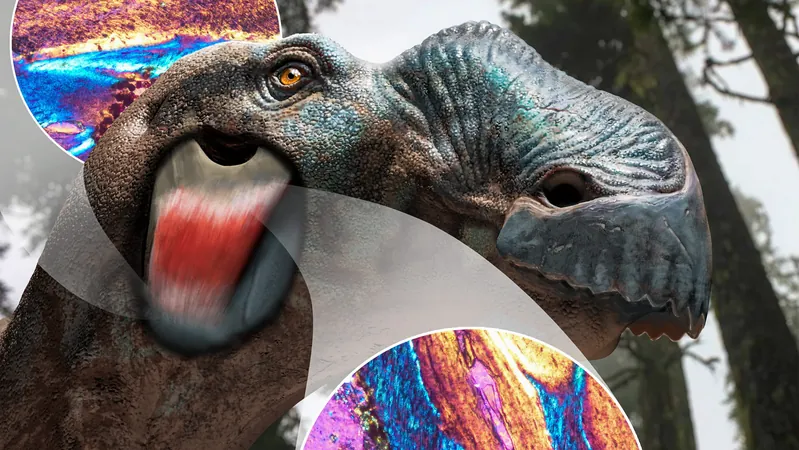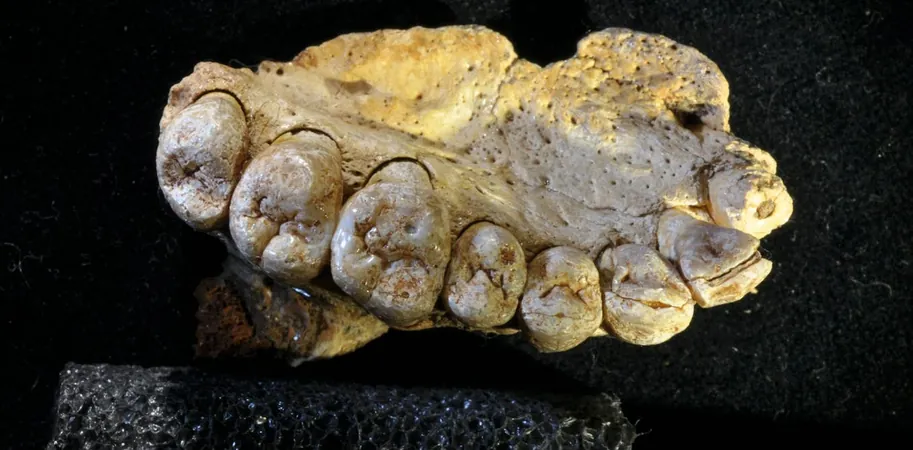
Unveiling the Cheek: Dinosaur Discovery Shakes Up Paleontology
2025-05-27
Author: Ming
In a groundbreaking discovery, researchers have uncovered a previously unknown soft tissue structure in the cheek area of various dinosaur species, now dubbed the "exoparia." This revelation not only enriches our comprehension of dinosaur anatomy but also underscores the shortcomings of current fossil reconstruction methods.
Typically, the soft tissues such as muscles decompose over time, leaving paleontologists with scant evidence of dinosaur anatomy. Henry Sharpe, a master's student in Biological Sciences and the lead author of the study published in the Journal of Anatomy, notes how this lack of soft tissue examples has been a major obstacle.
While paleontologists can piece together skeletons from fossilized bones, the reconstruction of soft tissue has remained a challenge. "For years, we lacked a reliable method to deduce the types of muscles and tissues dinosaurs might have had," Sharpe explains, reflecting on his experiences as a "paleoartologist"—a creator of lifelike dinosaur portrayals for academic research.
The paradigm shifted in the 1990s with the introduction of the "Extant Phylogenetic Bracket" method, which infers soft tissue characteristics by studying the dinosaurs' closest living relatives, namely crocodiles and birds. However, Sharpe raises a compelling concern: "What if dinosaurs had unique muscles that were either absent in the ancestors of birds or had evolved in different ways?"
This thought process sparked during his examination of an Edmontosaurus skull named Gary. A striking flanged structure near the cheek bone intrigued him, leading to a deeper inquiry.
"There were large, ridged areas on the skull—if this were a mammal, we would immediately identify that as a cheek muscle. But reptiles are thought to lack such a feature," Sharpe noted, which prompted a reevaluation of established assumptions.
Determined to decode this anatomical puzzle, Sharpe and his team examined skulls from multiple dinosaur species, consistently discovering the peculiar structure in the same location across different fossils. "Its regular presence hinted that it might represent a singular muscle or ligament," he remarked.
Through meticulous analysis, the researchers sectioned the dinosaur bones, revealing collagen fibers that once anchored soft tissues. Sharpe elaborated, "These fibers serve to connect muscles or ligaments securely to the bone, preventing injury by allowing them to remain in place even after the soft tissue decays."
Using a technique called THLEEP, which assesses the 3D orientation of the fibers in bone slices, they further confirmed the relationship between the cheek and the lower jaw, substantiating that the exoparia is akin to a cheek muscle or ligament.
The variation in initial size and attachment angles among the dinosaur species tested suggests that this soft tissue served specialized functions, potentially aiding in stabilizing the jaw or influencing feeding behavior. "Although we can’t pinpoint its exact purpose, the distinct modifications across species imply it played a crucial role in their feeding dynamics," said Sharpe.
This discovery highlights the critical need to broaden the lens through which we study dinosaur anatomy. "We are missing out on the incredible diversity of dinosaurs by limiting our understanding solely to modern relatives," Sharpe emphasized.
The research team has made all their findings, including slides and images, accessible to fellow scientists, encouraging further exploration of the exoparia in more dinosaur species. Sharpe hopes their study serves as a reminder of the importance of verifying and challenging our assumptions in paleontology.





 Brasil (PT)
Brasil (PT)
 Canada (EN)
Canada (EN)
 Chile (ES)
Chile (ES)
 Česko (CS)
Česko (CS)
 대한민국 (KO)
대한민국 (KO)
 España (ES)
España (ES)
 France (FR)
France (FR)
 Hong Kong (EN)
Hong Kong (EN)
 Italia (IT)
Italia (IT)
 日本 (JA)
日本 (JA)
 Magyarország (HU)
Magyarország (HU)
 Norge (NO)
Norge (NO)
 Polska (PL)
Polska (PL)
 Schweiz (DE)
Schweiz (DE)
 Singapore (EN)
Singapore (EN)
 Sverige (SV)
Sverige (SV)
 Suomi (FI)
Suomi (FI)
 Türkiye (TR)
Türkiye (TR)
 الإمارات العربية المتحدة (AR)
الإمارات العربية المتحدة (AR)